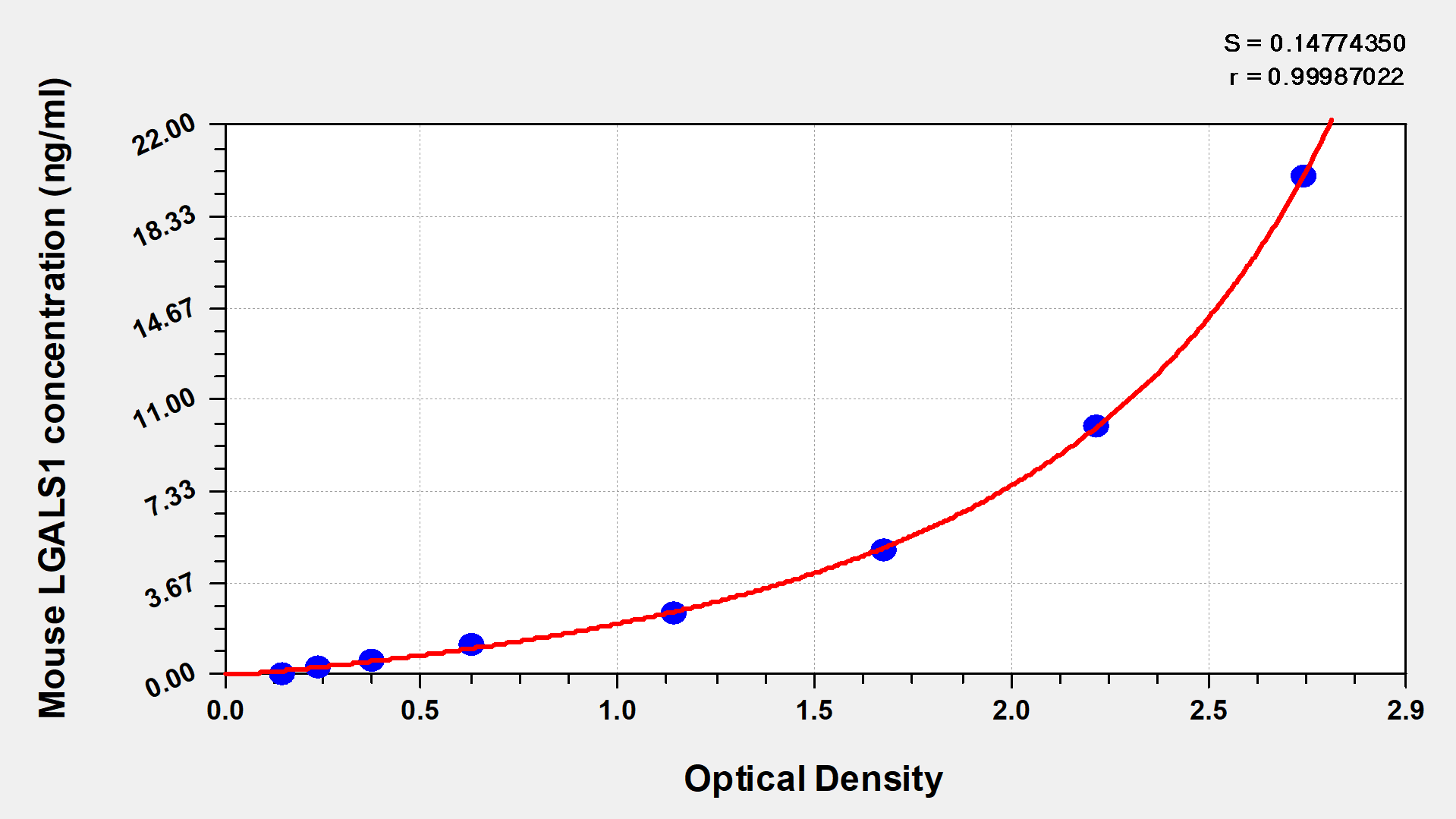The mouse galectin-1 (LGALS1) Elisa kit is suitable for the quantitative measurement of mouse LGALS1 in serum, plasma, or tissue homogenates. This assay employs the sandwich enzyme immunoassay technique and enzyme-substrate chromogenic reaction. The color develops positively to the amount of mouse LGALS1 in samples. The color development is stopped and the intensity of the color is measured. This kit displays many advantages, including high sensitivity, strong specificity, and lot-to-lot consistency.
LGALS1 is a functionally dimeric galactoside-binding protein involved in multivalent mechanisms that cluster cell surface glycoproteins, cross-link receptors, and form lattices and larger aggregates. The expression of extracellular LGALS1 is changed in various malignancies, including lung, bladder, cervical, and colorectal cancers. Overexpression of LGALS1 is often found in the stroma surrounding tumor cells. Elevated expression of LGALS1 has been associated with multiple processes in cancer progression, including cellular aggregation/tumor formation, metastatic spread of cancer, angiogenesis, and apoptosis.






